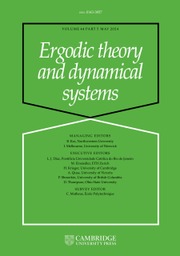Crossref Citations
This article has been cited by the following publications. This list is generated based on data provided by Crossref.
Di Nasso, Mauro
2022.
Infinite monochromatic patterns in the integers.
Journal of Combinatorial Theory, Series A,
Vol. 189,
Issue. ,
p.
105610.
Goswami, Sayan
and
Poddar, Jyotirmoy
2022.
Central Sets Theorem along filters and some combinatorial consequences.
Indagationes Mathematicae,
Vol. 33,
Issue. 6,
p.
1312.
Zhang, Teng
2026.
Thick sets and the Central Set Theorem.
Annals of Pure and Applied Logic,
Vol. 177,
Issue. 1,
p.
103645.

